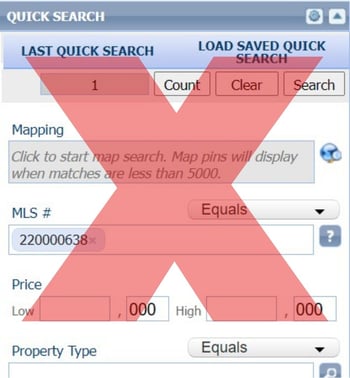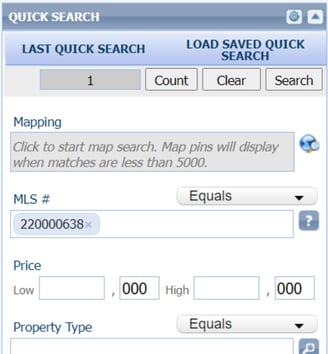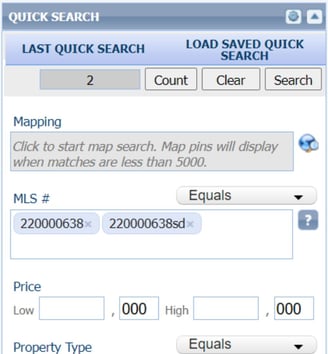
Ever wished you could stand out in a crowded market? Tired of competing on price and struggling to prove your worth? What if you could become the "go-to" agent in your area, the one clients can't imagine buying a home without?
It's possible. It's about creating your own "monopoly" – offering services so unique and valuable that clients won't even think of going elsewhere.
As CEO of PSAR and a seven-time home buyer, I've seen firsthand the challenges agents face today. Protecting your commission, navigating legal changes, and building client trust are top concerns. But the agents who thrive are those who differentiate themselves.
Stop Undervaluing Your Expertise!
Many agents shy away from the Buyer Representation & Broker Compensation Agreement (BRBC), fearing it might scare off clients. But the BRBC is your secret weapon! It's a commitment to a strong client-agent relationship, ensuring transparency and protecting both parties.
Here's the key: Don't just present the BRBC as a form. Present it as a benefit. Showcase your expertise and the unique value you bring to the table.
.png?width=750&height=197&name=images_%20monopolize%20(8).png)
12 Ways to "Monopolize" Your Market
Ready to become the "only one" clients choose? Here's how to create a unique value proposition:
1. Roll Out the Virtual Red Carpet
For relocating clients, offer virtual tours of properties, neighborhoods, and local attractions. Organize "day-in-the-life" virtual tours showcasing schools, parks, and amenities. Become their virtual concierge, providing a comprehensive "new resident orientation."
.png?width=750&height=197&name=images_%20monopolize%20(2).png)
2. Become the Ultimate Connector
Forge partnerships with trusted local vendors – cleaners, landscapers, handymen, interior designers, and more. Offer bundled services or a one-time setup as part of your commission. Connect clients with home security companies, smart home specialists, and utility providers.
3. Uncover Hidden Gems
Go above and beyond the MLS. Canvass neighborhoods to identify unlisted properties that fit your client's specific criteria. This proactive approach demonstrates your commitment to finding their dream home.
4. Make Move-In a Breeze
Arrange a comprehensive utility setup service, handling water, power, internet, and other essentials before move-in day. Offer setup services for smart home and security features. Give your clients peace of mind from day one.
5. Integrate Families into the Community
Go beyond school registration. Connect clients with local parent groups, recreational clubs, and community organizations. Provide "welcome packages" showcasing client-friendly amenities and events. Become their community connector.
.png?width=760&height=200&name=images_%20monopolize%20(4).png)
6. Provide Expert Property Insights
Partner with inspectors to offer pre-inspections on properties. Go the extra mile and offer a home warranty, paid for by you, to provide peace of mind and demonstrate your commitment to their investment. Include an initial maintenance plan or warranty on major home systems. Arrange regular seasonal maintenance check-ins. Become their trusted advisor for property care.
7. Become a Hyperlocal Expert with RPR® & Cloud CMA
Leverage REALTOR® Property Resource® (RPR®), a REALTOR® benefit, to generate custom neighborhood reports. Provide insights into market trends, demographics, school performance, and amenities. Utilize the CRMLS benefit Cloud CMA to easily create amazing comparative market analysis reports, Buyer Tours, Property Reports, and Flyers. Position yourself as the go-to expert for specific zip codes.
8. Manage Every Detail of Relocation
Offer relocation management services, including coordination with moving companies, packing/unpacking services, and trash-out/resale services. Simplify downsizing with partnerships for storage solutions and home organization.
9. Welcome Clients to Their New Life
Provide a post-purchase orientation, introducing clients to local organizations, social groups, and even neighbors. Arrange "meet and greet" events. Make their transition memorable and welcoming.
10. Offer Financial Peace of Mind
Arrange consultations with local financial planners or tax advisors to help clients understand the full financial impact of their purchase. Provide guidance on property taxes, deductions, and long-term financial goals. Be proactive! Schedule a reminder to call clients at the end of the year to explain their supplemental tax bill and what it means. This provides ongoing support and reinforces your value even after the sale.
11. Create a "Go-To" Resource
Develop customized home-buying guides covering local regulations, financing options, and the closing process. Include area-specific tips and links to trusted local vendors. Become their trusted advisor throughout the entire journey.
12. Maximize Efficiency with CubiCasa
Use CubiCasa, a FREE PSAR/CRMLS benefit, to offer floor plans of potential homes, saving clients time and effort. Provide floor plans as part of a property preview service for efficient evaluation and fewer in-person visits. Save your clients time and money.
.png?width=760&height=200&name=images_%20monopolize%20(5).png)
Technology that Transforms
In today's digital world, leveraging the right technology can be a game-changer. A platform like Rayse (exclusively for CRMLS brokers!) can revolutionize how you interact with clients. Imagine a system where your clients can see every step you take on their behalf, from property searches to scheduling showings and negotiating offers. Rayse provides that transparency builds trust, and demonstrates your commitment to their success.
Enhance Your Skills, Enhance Your Value
Take advantage of the free online Accredited Buyer’s Representative (ABR®) course offered for free by NAR until the end of 2024. This designation equips you with specialized knowledge in buyer representation, boosting your credibility and client service approach.
Flexible Packaging for Every Client
Offer services à la carte, bundled, or in tiered packages. Designate a team member to manage specific services. Provide direct, fee-for-service options for focused assistance.
Build Your Monopoly, Build Your Success
By focusing on these unique, client-centered services, you can build a "monopoly" based on differentiation, trusted relationships, and specialized knowledge. Attract more clients, create long-term relationships, and maximize your value and profitability. Embrace tools like the BRBC to safeguard your efforts and reinforce your commitment to your clients' best interests. But your service doesn't stop at the sale. Continue to provide referrals for services like landscaping, home maintenance, and even dog walkers. Offer ongoing support and recommendations, including annual property value updates using your free CRMLS access to Cloud CMA, to solidify your role as their lifelong real estate advisor.
.png?width=760&height=200&name=images_%20monopolize%20(7).png)
PSAR/CRMLS Benefits to Assist Buyer's Agents
________________________________________________
Disclaimer
It’s essential for licensees to consult with their broker before making any changes to business practices, as brokers can provide guidance on legal and regulatory requirements specific to your practice. This ensures compliance and aligns with industry standards. I have 30 years of business management experience and hold a degree in marketing and business administration, but I am not an attorney or a licensed broker.
________________________________________________
PSAR's mission is to empower real estate professionals.
Since 1928, the Pacific Southwest Association of REALTORS® has played a significant role in shaping the history, growth & development of the Real Estate industry in San Diego County.


 The recent Southern California wildfires have prompted Executive Order N-7-25, which directly impacts real estate professionals working in fire-affected areas. This Order, effective until April 14, 2025, aims to protect property owners from unsolicited offers that fall below fair market value.
The recent Southern California wildfires have prompted Executive Order N-7-25, which directly impacts real estate professionals working in fire-affected areas. This Order, effective until April 14, 2025, aims to protect property owners from unsolicited offers that fall below fair market value.

.png?width=750&height=197&name=images_%20monopolize%20(8).png)
.png?width=750&height=197&name=images_%20monopolize%20(2).png)
.png?width=760&height=200&name=images_%20monopolize%20(4).png)
.png?width=760&height=200&name=images_%20monopolize%20(5).png)
.png?width=760&height=200&name=images_%20monopolize%20(7).png)
.png?width=760&height=200&name=blogbanner_debateCCP_241022%20(1).png)










 "Testing refers to the use of individuals who – without any bona fide intent to rent or purchase housing, purchase a mortgage or vehicle loan, or patronize a place of public accommodation – pose as prospective renters, borrowers, or patrons for the purpose of gathering information. This information may indicate whether a provider is complying with federal civil rights laws. The primary focus of the Section's Fair Housing Testing Program has been to identify unlawful housing discrimination based on race, national origin, disability, or familial status in violation of the Fair Housing Act. The Section also has responsibilities to enforce Title II of the Civil Rights Act of 1964, the nation's public accommodations law; the Equal Credit Opportunity Act, which prohibits discrimination in credit; and the Servicemembers Civil Relief Act, which provides protections for military members as they enter active duty. The Fair Housing Testing Program also conducts testing under these statutes, as well as under the Americans with Disabilities Act, which is enforced by the Disability Rights Section of the Civil Rights Division."
"Testing refers to the use of individuals who – without any bona fide intent to rent or purchase housing, purchase a mortgage or vehicle loan, or patronize a place of public accommodation – pose as prospective renters, borrowers, or patrons for the purpose of gathering information. This information may indicate whether a provider is complying with federal civil rights laws. The primary focus of the Section's Fair Housing Testing Program has been to identify unlawful housing discrimination based on race, national origin, disability, or familial status in violation of the Fair Housing Act. The Section also has responsibilities to enforce Title II of the Civil Rights Act of 1964, the nation's public accommodations law; the Equal Credit Opportunity Act, which prohibits discrimination in credit; and the Servicemembers Civil Relief Act, which provides protections for military members as they enter active duty. The Fair Housing Testing Program also conducts testing under these statutes, as well as under the Americans with Disabilities Act, which is enforced by the Disability Rights Section of the Civil Rights Division."